In my explorings I have come across the terms ‘pull up’ and ‘pull down’ resistors in conjunction with digital circuits. So… what are they? How do they work? And why do we need them? CMOS gates are sensitive to static electricity and can be damaged by high voltages, they may also assume any logic level […]
At the beginning of this project electronics in general terrified me. I had one project under my belt and I felt it didn’t really count as I used a kit. Now I’m planning my own little projects to do over the summer! I love the intricacies and the logic in electronics, making my test circuits […]
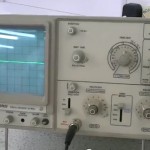
Ok, I’ve come across a few really important tools and processes in my circuit experiments so far and I thought it would be a good idea to give them a proper introduction seeing as they’ve been so helpful… Our old friend, the oscilloscope, has made another appearance. It first made itself invaluable in my keypad safe […]
ELECTRICITY AND ELECTRONICS WORK The design and construction of items which will be connected to the mains supply where the use of electricity is peripheral (eg, lamps) or fundamental (eg, low-voltage power supplies for electronics). Process(es) covered: Instruction in the repair and maintenance of high-voltage equipment. The construction of electronics circuits from prepared modules […]
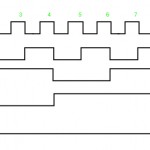
I wanted to create a couple of circuits using 555 timers and 4017 decade counters but I seem to have hit a brick wall in trying to obtain any 4017s! Rapid look through equivalent chips with Dean and it looks like I can use a 4028 chip instead. A 4028 is officially known as a BCD […]

Now we get to have a little fun… I’m going to take a look at the 3 types of circuit you can make with a 555 timer, astable, monostable and bistable. Monostable – one stable state This is my monostable circuit and I’ve calculated that I need a 100K resistor with my 100µf capacitor to […]
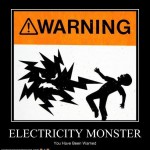
Before starting any experimentation, even if it’s just prototyping on breadboards you need to think about… Seeing yourself as a giant resistor. Sounds a bit silly right? It’s true though, the human body does have some resistance to electric current. To stay as safe as you can when working with electronics you need to think […]
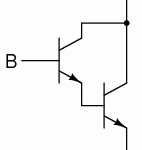
Brilliant session with Dean today, loads to add… First, the Darlington driver or Darlington pair. You basically feed the emitter of one NPN transistor to the base of another, this multiplies their individual current gains so massively boosting the signal. Darlington pairs can be used like this to convert analogue signals to digital ones. If you had […]
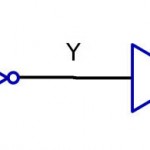
I’ve moved on a bit since the last time I looked at logic gates so I think it’s about time to revisit… I’ve found out a bit more on NOT gates, they are actually called inverters, not surprisingly as they ‘invert’ the input into the output. When you connect up two inverters in series you […]
Digital ICs are classified into logic families depending on how they’re constructed on the inside. Some construction methods make the circuits run faster or work using lower currents or just by being able to fit more gates in. There are loads of logic families but the two most famous (and the ones I’ll likely be using) are […]